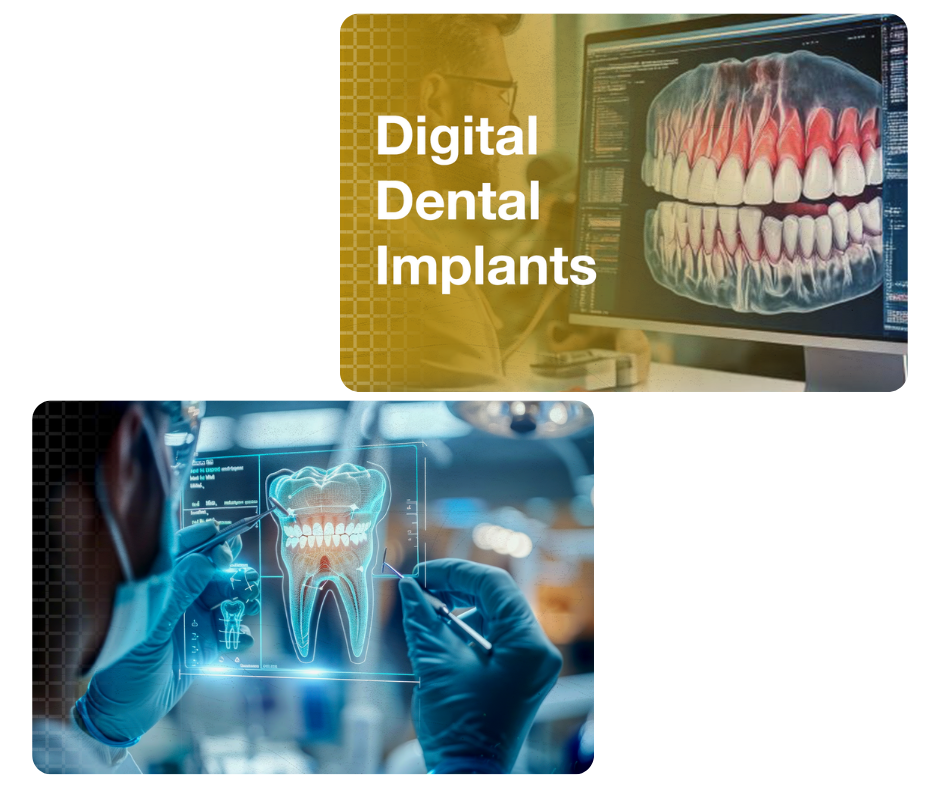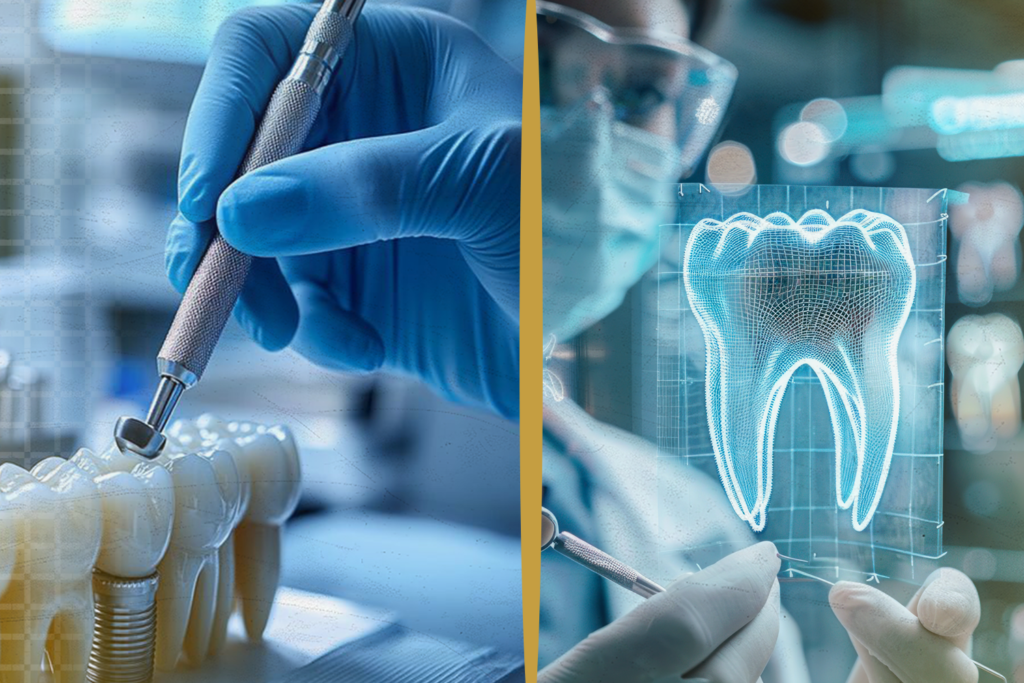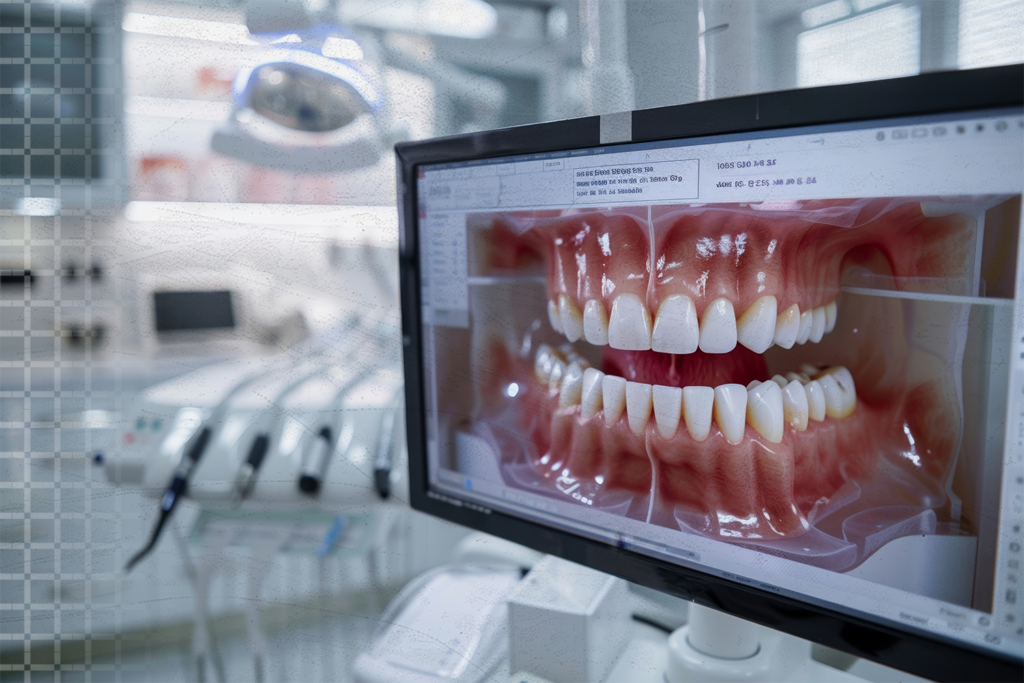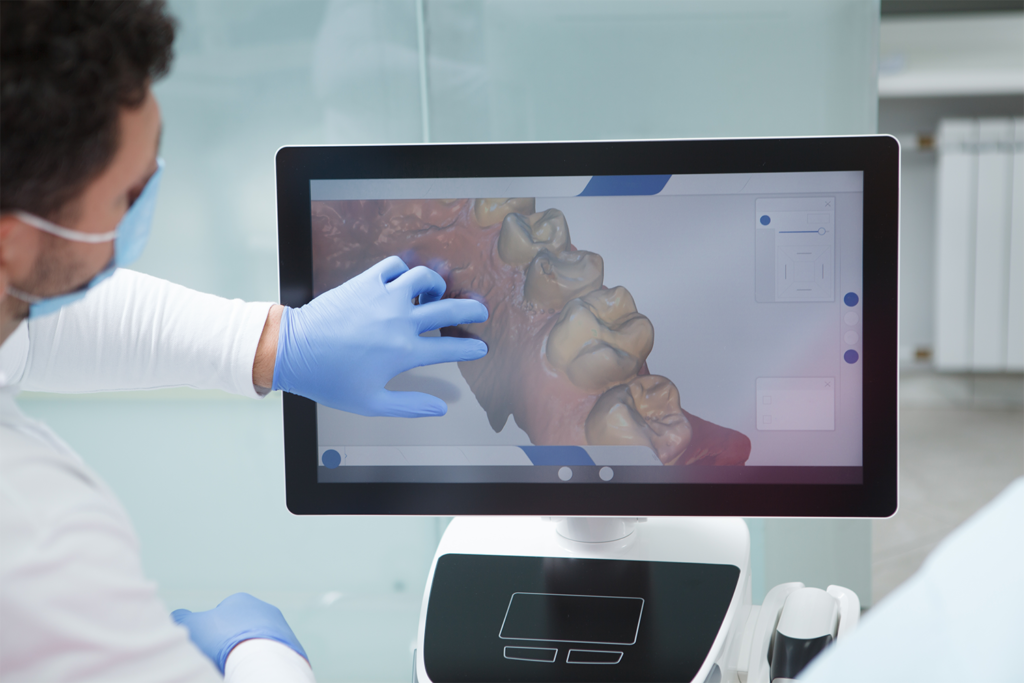- Saturday to Thursday: 11:00 AM - 8:00 PM

In recent years, dentistry has evolved tremendously, yet millions still suffer from periodontaldisease and tooth decay, resulting in the need for realistic,long-lasting treatments. Tooth lossaffects more than just chewing; it impacts the facial structure, synchronizing the lips andcontributing to an aging appearance.
Unlike traditional methods, these implants use 3D scanning technology to precisely map yourmouth, creating a digital model of your jawbone to ensure the implant’s accurate placement,much like a natural tooth root.
This technique often uses biocompatible titanium posts that integrate with your jaw, supportingreplacements for individual teeth, bridges, or even dentures.

Traditional implants involve lengthy, manual procedures with regular X-rays and manualimpressions to create a tooth model, less precise and occasionally uncomfortable.
Digital implants, by contrast, use advanced tools like cone beam computed tomography (CBCT)and intraoral scanners.
This method offers a faster process with significantly greater accuracy, simplifyingmeasurements and reducing the procedure time.



Each digital implant typically takes under 20 minutes, minimizing swelling, bleeding, andinfection risks.
In many cases, you’ll only need two visits—one for scanning and one for the implant placement.
This investment is for life, making it worthwhile for many patients.
Tips for a Successful Digital Implant
Is Digital Implantation Right for Everyone?
If you grind or clench your teeth, known as bruxism, this habit can also affect implant longevity.
Digital Implant Success Rates
Outcomes of Digital Implants
How to Choose a Digital Implant Specialist
At Brightway Clinics, we use modern technology to offer a fully digital implant experience. Fromscanning to placement, our expertise in digital implants is trusted by many patients. to schedule a consultation and take the first step toward a brighter smile.

Bright Way Dental Clinic is a modern dental clinic, specialized in advanced diagnostics and treatment of dental and oral disorders.We offer comprehensive services in all areas of dentistry. In addition to ensuring high-end dental equipment, we work to deliver or service in a comfortable and luxurious setting.
Copyright © 2024 Bright Way Dental Clinic – All Right Reserved.